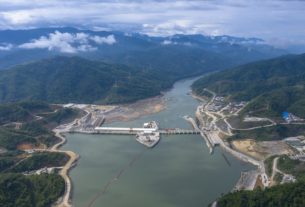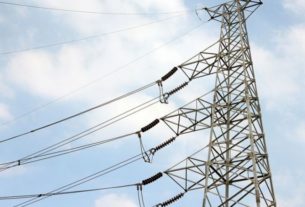TWO coal-fired power plants planned for Krabi and Songkhla’s Thepha district are a crucial part of the national energy strategy to diversify power generation options, as well as reduce electricity costs and enhancing energy-supply security, a senior Energy Ministry official said last week.
Twarath Sutabutr, head of the Energy Policy and Planning Office, said the latest Power Development Plan (PDP-2015) – recently approved by the government – was designed to tackle imbalances inherited from the previous plan.
This includes lowering projected national electricity demand and the country’s dependency on natural gas for power generation, he said. Although the national power reserve is projected to continue to provide 30-per-cent surplus capacity over the next 10 years, even with the revised PDP, the country needed to proceed with the coal-fired power plants planned for Krabi and Thepha, in Songkhla province for the sake of diversifying national energy sources and a secure supply of power for the South, he said.
Without the planned power stations, electricity demand in the South was forecast to top the combined capacity of power plants in the region from 2020.
Further, the average electricity tariff for the next 15 years would be cut to Bt4.587 per kilowatt hour under PDP-2015, from more than Bt5 in the previous plan, if the two plants, which would run on coal imported from abroad, go ahead, Twarath said.
Having other types of power plants that don’t run on natural gas would help cut imports of liquefied natural gas (LNG), which is more expensive.
The Electricity Generating Authority of Thailand (Egat) has proposed both plants, but faces strong objections from local communities and environmentalists. Plus the tourism sector, which is a lifeblood of the south, fears negative impacts from the coal-fired power stations.
Twarath said that without the plants, the region would face a higher risk of power supply being unstable, as it would have to depend more on electricity transmitted from the central region, if alternate sources weren’t created.
“There would be a risk in the event of power supply not being able to come in from the central region, as has occurred in the past,” he said, citing an incident in 2013 when lightning struck one of the two main transmission circuits linking the central and southern regions, causing a blackout in the 14 southern provinces. But Egat is building two extra transmission circuits to link the two regions, which will help strengthen supply security for the South.
Twarath said if the Krabi and Thepha coal-fired projects could not be developed, the best option might be to build LNG floating facilities in the Gulf or on the Andaman Sea, to supply natural gas to existing or new gas plants in the south.
PDP-2015 aims to reduce the country’s reliance on natural gas as fuel for electricity generation from 64 per cent this year to 37 per cent at the end of the plan in 2036, while increasing the contribution of other fuels – especially imported coal and renewable energy – from 10 per cent to 17 per cent, and from 7 per cent to 18 per cent, respectively.
Source: http://www.nationmultimedia.com/business/Coal-plants-seen-as-way-to-cut-dependence-on-natur-30272989.html


